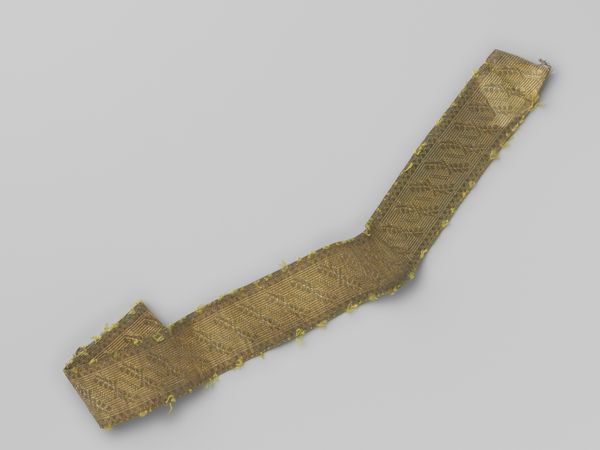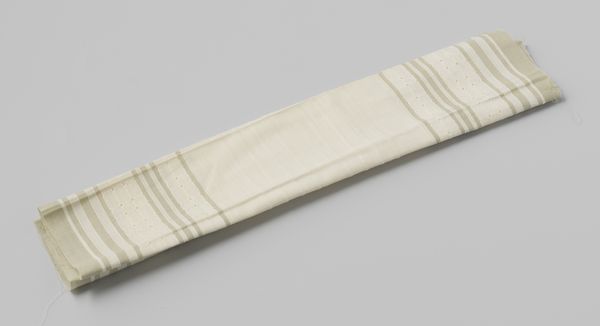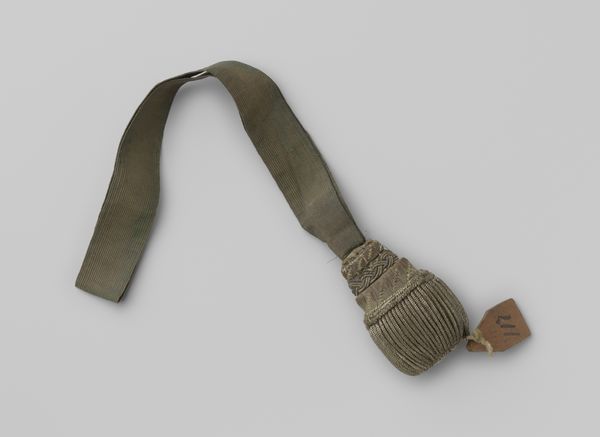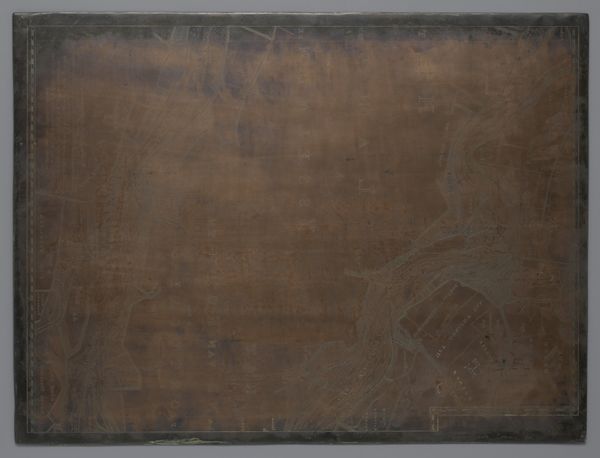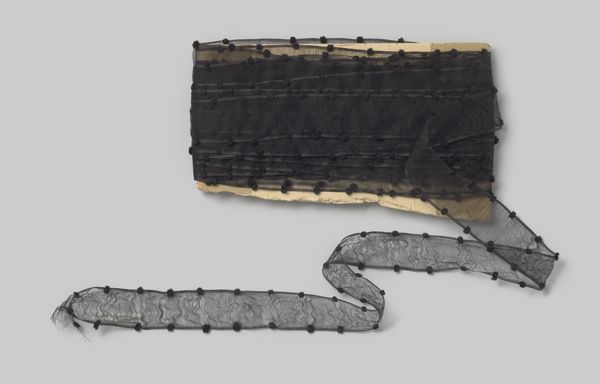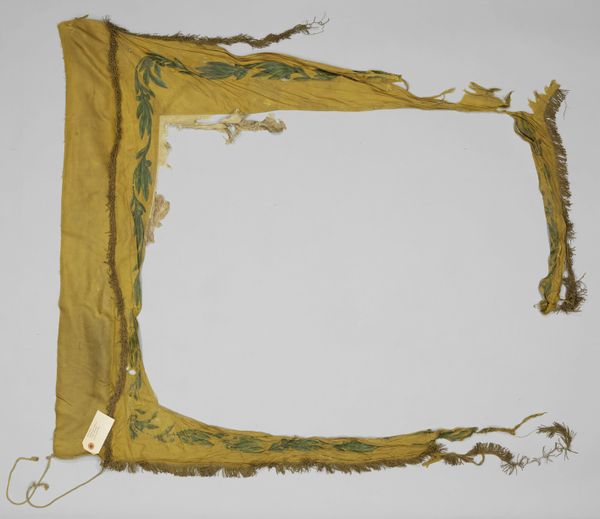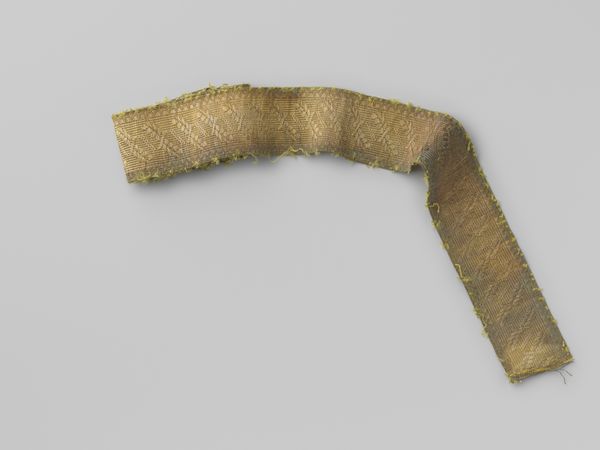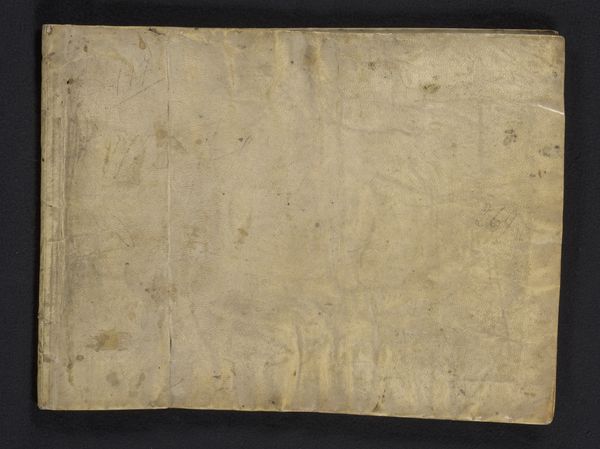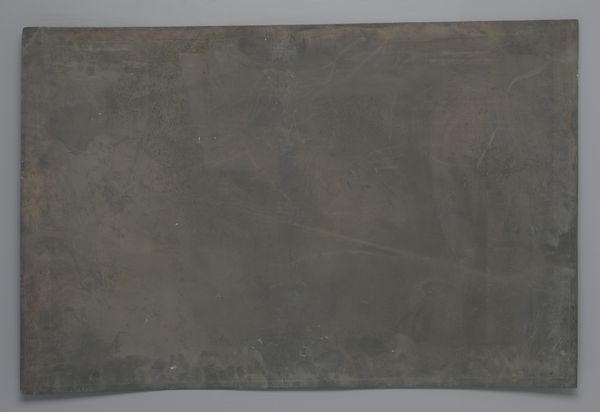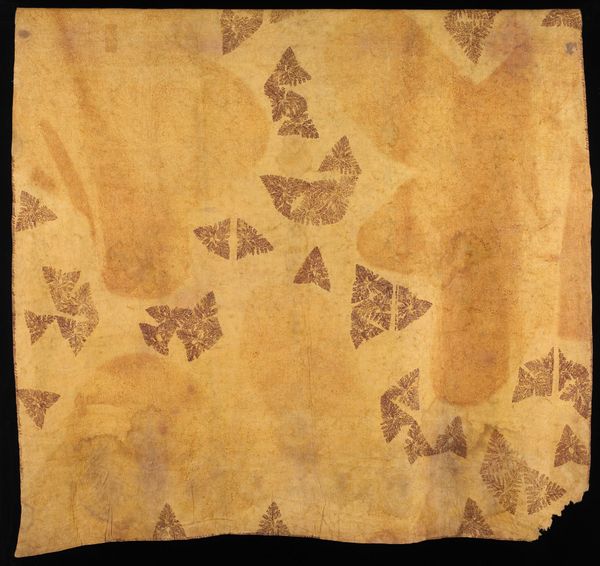
Twee zeilen, behorend bij een model van een kanonneergalei c. 1800 - 1807
0:00
0:00
drawing, pencil
#
drawing
#
toned paper
#
organic shape
#
underpainting
#
pencil
#
watercolor
Dimensions: height 32.5 cm, width 38 cm, height 9.6 cm, width 16 cm
Copyright: Rijks Museum: Open Domain
Editor: Here we have "Twee zeilen, behorend bij een model van een kanonneergalei" - or "Two Sails, Belonging to a Model of a Gunboat" by Jochem Pietersz. Asmus, from around 1800-1807. It appears to be a drawing done with pencil and watercolor on toned paper, depicting just that: two sails. The stitches that connect the sailcloth pieces really stand out. What do you make of it? Curator: These sails are quite striking because they speak to the often-overlooked labor involved in naval power. These aren't just abstract representations of sails, they're meticulous depictions of constructed objects. Notice how Asmus painstakingly renders each stitch. It invites us to consider the hands that sewed these sails, the conditions they worked in, and their contribution to the larger military apparatus. It makes us wonder: were these sails mass-produced, and what was the division of labor like? Editor: That's fascinating. I hadn't thought about it that way. The focus on the handmade element disrupts this idea of perfect, uniform military might. Curator: Exactly! And it questions the hierarchy often found in art history, one that elevates painting or sculpture over something deemed 'craft', like sail-making. Who decided that these types of labor and these specific types of media couldn't hold historical significance or aesthetic value? What is art? What is labor? Editor: So by looking at the materials and the process, we start to uncover these hidden stories and challenge established categories... I see that now. I had approached this assuming its only importance was that it was a precursor to shipbuilding but there is so much more embedded in the media than I considered. Curator: Precisely. Even the "toned paper" mentioned in the artwork's description – that's not a neutral surface. How does the use of pre-colored material affect the process of creating the artwork, and how does this potentially change the perception of value from those who appreciate the artistry and effort? Editor: Thanks for pointing all of this out, I have a new appreciation for process now!
Comments
No comments
Be the first to comment and join the conversation on the ultimate creative platform.

